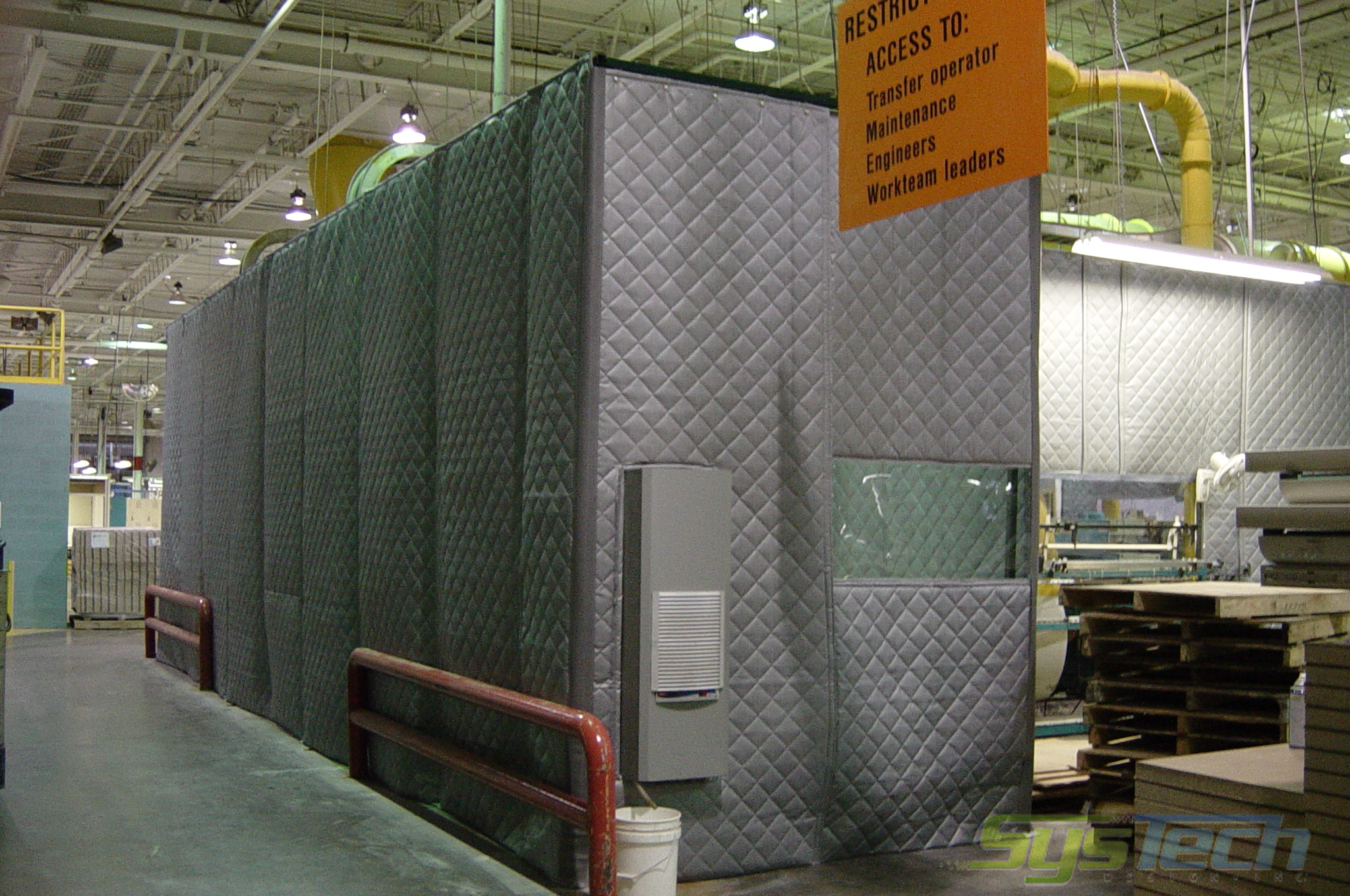Noise pollution is a significant concern in industrial settings. From the hum of machinery to the clanging of heavy equipment, industrial environments can generate high levels of noise, which can pose risks to workers’ health, disrupt surrounding communities, and violate regulatory standards. Managing noise is not only about compliance but also about improving working conditions, reducing operational risks, and maintaining good relationships with neighboring communities.
In this article, we’ll explore the importance of site-specific noise management in industrial settings, the challenges posed by industrial noise, and effective strategies to mitigate noise at its source. We’ll also discuss the tools and technologies used to monitor and control noise levels to ensure a safer, more compliant industrial environment.
The Importance of Noise Management in Industrial Settings
Industrial operations inherently produce noise due to the nature of heavy machinery, equipment, and continuous processes. Left unmanaged, this noise can have various negative effects:
Health Risks for Workers: Prolonged exposure to high noise levels can lead to hearing loss, stress, fatigue, and even cardiovascular issues. According to the World Health Organization (WHO), industrial noise exposure is a significant contributor to occupational hearing loss worldwide.
Impact on Productivity: Excessive noise can reduce worker concentration, leading to errors and accidents. A quieter work environment fosters improved focus, efficiency, and overall safety.
Community Relations: Noise pollution from industrial sites can extend beyond factory walls, affecting nearby residential or commercial areas. Persistent noise can lead to complaints, regulatory scrutiny, and strained relationships with local communities.
Regulatory Compliance: Many countries have strict noise regulations in place for industrial operations. Failing to meet these noise standards can result in fines, penalties, and even operational shutdowns.
To mitigate these impacts, industrial facilities must implement site-specific noise management strategies that consider the unique characteristics of their operations, locations, and noise sources.
The Challenges of Managing Industrial Noise
Managing noise in industrial settings presents unique challenges due to the variety of equipment and processes involved. Some of the common noise sources in industrial environments include:
Machinery and Equipment: This includes pumps, compressors, conveyors, and turbines, all of which generate significant noise during operation.
Transportation: Industrial facilities often involve heavy vehicle traffic, such as trucks, forklifts, and cranes, which contribute to the overall noise levels on-site.
Ventilation and Exhaust Systems: Fans, ducts, and air conditioning systems can create consistent background noise that adds to the total noise output.
Vibration: Many industrial processes generate vibrations that can amplify sound levels and contribute to noise pollution both within the facility and externally.
Each industrial setting is different, and noise levels can vary depending on the layout, types of machinery, and local environmental factors such as terrain, weather conditions, and building structures. This complexity means that a one-size-fits-all approach to noise management is often ineffective. Instead, site-specific strategies that account for the particular challenges of each site are necessary.
Effective Noise Management Strategies
Effective site-specific noise management begins with understanding the unique sources of noise and determining how best to mitigate their effects. Below are key strategies that industrial facilities can implement to manage noise effectively:
Conducting Noise Assessments
Before developing a noise management plan, a thorough noise assessment is necessary. This involves identifying the major sources of noise, measuring sound levels, and determining how far noise travels beyond the site’s boundaries. Noise assessments help to create a detailed noise map of the facility, showing areas with the highest noise levels and potential risk zones for workers and nearby communities.
Implementing Engineering Controls
Engineering controls involve redesigning equipment, processes, or layouts to reduce noise at its source. Some examples include:
Enclosing Noisy Machinery: Building soundproof enclosures around machines can significantly reduce the sound that escapes into the workplace.
Installing Noise Barriers: Noise barriers, such as walls or panels, can block or absorb sound, preventing it from spreading throughout the facility or into nearby areas.
Maintaining Equipment: Regular maintenance of machinery ensures that it operates efficiently and with minimal noise. Worn-out parts, loose fittings, and misaligned components can all contribute to excessive noise.
Upgrading to Quieter Technology: Where possible, replacing older, noisier equipment with newer, quieter alternatives can help reduce the overall noise levels in the facility.
Administrative Controls
Administrative controls focus on reducing workers’ exposure to noise by modifying work schedules or rotating personnel. Examples of administrative controls include:
Limiting Exposure Time: Rotating workers through noisy areas or scheduling quieter tasks during peak noise periods can reduce prolonged exposure to harmful noise levels.
Designating Hearing Protection Zones: Marking specific areas where noise levels exceed regulatory limits and requiring workers to wear appropriate hearing protection.
Noise Awareness Training: Training workers to be aware of noise hazards and encouraging them to follow best practices for hearing protection, such as wearing earplugs or earmuffs.
Personal Protective Equipment (PPE)
Where engineering and administrative controls are not sufficient, personal protective equipment (PPE) should be provided to workers. Hearing protection devices, such as earplugs and earmuffs, can reduce workers’ exposure to harmful noise. It’s important to ensure that PPE is comfortable, effective, and consistently used by workers in high-noise areas.
Implementing Real-Time Noise Monitoring Systems
Real-time noise monitoring is an essential component of modern noise management. Noise monitoring systems continuously measure sound levels across different parts of the facility and can alert operators when noise exceeds pre-defined thresholds.
Portable Noise Monitors: These can be used to monitor noise levels at different locations within the facility, providing flexibility for assessing specific areas.
Fixed Monitoring Stations: Placed in key locations, these provide continuous data on noise levels and trends over time, allowing operators to take immediate action when noise levels rise above safe limits.
Data Analysis and Reporting: Noise monitoring systems can produce detailed reports, allowing facility managers to track noise trends and ensure compliance with regulations.
Engaging with the Community
In addition to controlling noise within the facility, it is important to engage with local communities and address their concerns about noise pollution. Open communication and regular updates on noise management efforts can foster good relationships and help avoid potential disputes. Conducting community noise surveys and sharing noise reduction initiatives with local stakeholders can demonstrate the facility’s commitment to reducing its environmental impact.
Conclusion
Site-specific noise management in industrial settings is crucial for protecting workers’ health, complying with regulations, and maintaining positive community relations. By conducting thorough noise assessments, implementing engineering and administrative controls, and utilizing real-time noise monitoring systems, industrial facilities can effectively manage their noise output. While challenges such as machinery, transportation, and exhaust systems create ongoing noise issues, a targeted and comprehensive approach can mitigate these impacts, ensuring a safer and quieter environment for all. As technology continues to advance, industries will have even more tools at their disposal to address the issue of industrial noise, making workplaces safer and more compliant with regulatory standards.





Be First to Comment